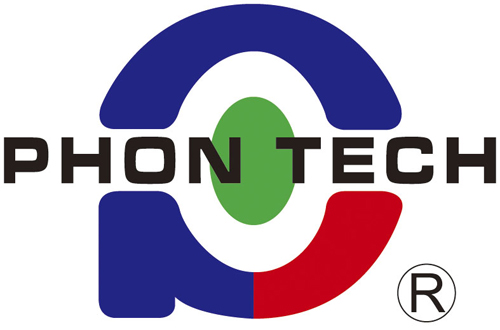- Home
- Blog
- Material & Life
- Understanding GHG Emission Quantification and Verification
Understanding GHG Emission Quantification and Verification
2023-11-20

Greenhouse gas (GHG) emissions are a critical factor contributing to global climate change. To mitigate these effects, accurately quantifying and verifying GHG emissions becomes imperative. It involves precise quantification and verification of emissions to establish baselines, set reduction targets, and track progress toward climate goals.
Quantification of GHG Emissions
Quantifying GHG emissions involves assessing the volume of various gases released into the atmosphere due to human activities. The commonly measured GHGs include carbon dioxide (CO2), methane (CH4), nitrous oxide (N2O), hydrofluorocarbons (HFCs), perfluorocarbons (PFCs), sulfur hexafluoride (SF6), and nitrogen trifluoride (NF3).
Methods of Quantification:
Activity Data: This involves collecting data on activities that produce emissions, such as energy consumption, transportation, industrial processes, and land-use changes.
Emission Factors: These are coefficients used to convert activity data into GHG emissions. For example, an emission factor might represent the amount of CO2 produced per unit of fossil fuel burned.
Calculations and Models: Various calculation methods and models are employed to estimate emissions based on activity data and emission factors. These can range from simple spreadsheets to complex software models.
Direct Measurement: Some emissions, especially in industrial settings, can be directly measured using sensors and monitoring equipment.
Verification of GHG Emissions
Verification ensures the accuracy and reliability of reported emissions data. It involves a thorough examination of the quantification methods, data sources, and calculations used to determine GHG emissions. Verification aims to confirm that reported emissions are consistent, complete, transparent, and free from significant errors or omissions.
Key Aspects of Verification:
Third-Party Verification: Often, independent third parties or accredited organizations conduct verification processes to ensure objectivity and credibility.
Quality Assurance and Quality Control (QA/QC): Rigorous QA/QC procedures are crucial in data collection, processing, and reporting to maintain accuracy and reliability.
Verification Protocols: Adherence to established protocols and standards, such as those outlined by the Intergovernmental Panel on Climate Change (IPCC) or national regulatory bodies, ensures consistency and comparability of reported emissions.
Continuous Improvement: Verification processes should evolve with advancements in technology, methodologies, and understanding of emissions to enhance accuracy and effectiveness.
Quantification of GHG Emissions
Quantifying GHG emissions involves assessing the volume of various gases released into the atmosphere due to human activities. The commonly measured GHGs include carbon dioxide (CO2), methane (CH4), nitrous oxide (N2O), hydrofluorocarbons (HFCs), perfluorocarbons (PFCs), sulfur hexafluoride (SF6), and nitrogen trifluoride (NF3).
Methods of Quantification:
Activity Data: This involves collecting data on activities that produce emissions, such as energy consumption, transportation, industrial processes, and land-use changes.
Emission Factors: These are coefficients used to convert activity data into GHG emissions. For example, an emission factor might represent the amount of CO2 produced per unit of fossil fuel burned.
Calculations and Models: Various calculation methods and models are employed to estimate emissions based on activity data and emission factors. These can range from simple spreadsheets to complex software models.
Direct Measurement: Some emissions, especially in industrial settings, can be directly measured using sensors and monitoring equipment.
Verification of GHG Emissions
Verification ensures the accuracy and reliability of reported emissions data. It involves a thorough examination of the quantification methods, data sources, and calculations used to determine GHG emissions. Verification aims to confirm that reported emissions are consistent, complete, transparent, and free from significant errors or omissions.
Key Aspects of Verification:
Third-Party Verification: Often, independent third parties or accredited organizations conduct verification processes to ensure objectivity and credibility.
Quality Assurance and Quality Control (QA/QC): Rigorous QA/QC procedures are crucial in data collection, processing, and reporting to maintain accuracy and reliability.
Verification Protocols: Adherence to established protocols and standards, such as those outlined by the Intergovernmental Panel on Climate Change (IPCC) or national regulatory bodies, ensures consistency and comparability of reported emissions.
Continuous Improvement: Verification processes should evolve with advancements in technology, methodologies, and understanding of emissions to enhance accuracy and effectiveness.
The Way Forward
Completing GHG emission quantification and verification is not a one-time task; it's an ongoing commitment to accountability and sustainability. As we strive to meet ambitious climate targets, continuous improvement in methodologies, technology adoption, and collaborative efforts will be pivotal. By closing the loop on these processes, organizations and nations demonstrate their dedication to mitigating climate change and creating a sustainable future for generations to come.Article Classification
Recent Articles
- TPE Menstrual Cups: The Future of Sustainable Period Care
- Elevate your cosmetic packaging with PHOENIX TPEs
- Luggage wheels with PHOENIX™ TPE can take you further
- Let our Static Dissipative TPE & Conductive TPE enrich your product design
- Why TPE is the perfect material for your Fish Bait
- TPEs: Ideal Materials for Syringe Gasket Applications
- How does TPEs help you relax from the daily
- Understanding GHG Emission Quantification and Verification
- PHOENIX™ TPEs care about you, because you are our baby.
- GRS & RCS: Certification For Recycled Materials
- PHOENIX Materialize Your Vision for Sustainable Future
- PHOENIX™ Antimicrobial TPEs help you combat bacteria
- To fast display yourself on the PHOENIX™ TPEs material-made product.
- Learn TPE from daily dental care
- TPE - The Small but Important Piece in Bottle Caps
- Life Matters: High-quality PHOENIX™ TPEs for Medical Applications
- The crucial elements in human life
- The indispensable utensils in the KITCHEN
- The recyclability of PHOENIX™ TPEs
- A Peek Into A Ballerina's Dance Bag
- How to discover the Phoenix™ at 2021 Tour De France!?
- TPE: Enjoy cycling with comfort grips
- Your great company during Covid-19 pandemic!!
- TPE: Why Does It Matter To The Hospital Bed Caster
- Compression Set of Thermoplastic Elastomers

